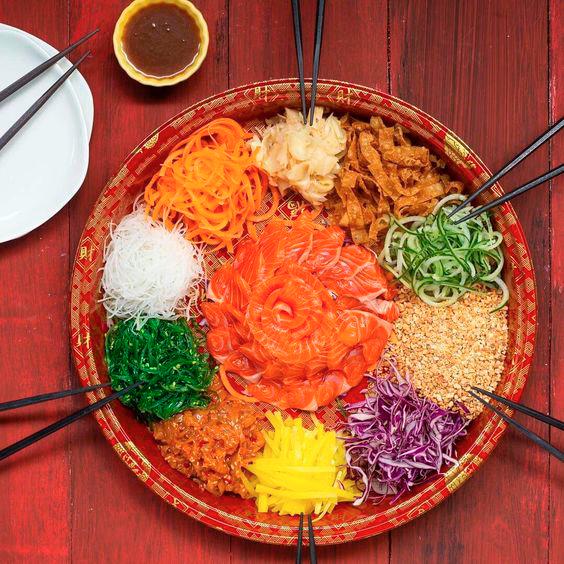YEE sang, also known as yu sheng in Mandarin, is a traditional Chinese dish that holds significant cultural and symbolic importance, especially during the Chinese New Year celebration.
Yee sang’s origins can be traced back to the 1960s in Malaysia, where it was created by a group of chefs. The dish gained popularity quickly, spreading to other parts of Southeast Asia and eventually becoming a staple during Chinese New Year celebrations. Its appeal lies not only in its vibrant flavours but also in the communal and festive experience it provides for families and friends.
The name yee sang literally translates to “raw fish” in Cantonese, emphasising one of the key ingredients in this dish. Yee sang is essentially a festive salad, but its preparation and consumption involve unique rituals and symbolism that add to its cultural significance.
The main components of yee sang include shredded vegetables, various condiments and raw fish, usually salmon. The vegetables commonly used include carrots, radishes, cucumbers and pomelo, all of which are finely shredded. These ingredients contribute to the dish’s vibrant and auspicious colours, symbolising prosperity, good luck and wealth.
The act of tossing and mixing the ingredients is a crucial part of the yee sang tradition. This is known as the lo hei or yee sang toss, where family and friends gather around the table to participate in the tossing ceremony. The higher the toss, the greater the prosperity and good fortune are believed to be. As the ingredients are mixed, people shout auspicious phrases and wishes, creating a joyful and lively atmosphere.

Each ingredient in yee sang holds symbolic meaning. The shredded carrots represent good luck, while the radishes symbolise harmony. Cucumbers signify a long and healthy life and the pomelo represents abundance. Adding crackers or crispy elements to the dish represents a flourishing business and financial success. The raw fish, particularly salmon, represents abundance and prosperity, as the word for “fish” in Chinese sounds similar to the word for “surplus” or “extra”.
Aside from its cultural and symbolic significance, yee sang is also celebrated for its health benefits. The combination of fresh vegetables, raw fish and various condiments provides a nutritious and well-balanced meal. The use of raw fish is also believed to bring in positive energy and vitality.
In recent years, yee sang has evolved and chefs and home cooks alike have experimented with different variations and ingredients. Some may incorporate unique twists, such as adding fruit, nuts or alternative proteins, while others may stick to the traditional recipe. Regardless of the variations, the essence of yee sang – a dish that brings people together to usher in good fortune and prosperity – remains intact.
In short, yee sang is a dish that represents the spirit of celebration, unity and the hope for a prosperous future. Its vibrant colours, rich symbolism and communal traditions make it a beloved and essential part of Chinese New Year festivities, fostering a sense of togetherness and positive energy for all who partake in the tradition of lo hei.









